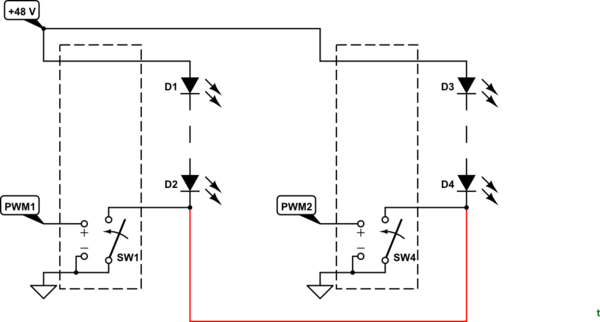I'm using these Mean Well LDD-H DC-DC constant current step-down LED drivers to drive these LEDs.
What I'm seeing is that when the -Vout terminals of the drivers are connected together, both LED strips start being driven in sync (as if the PWM inputs are connected).
If is use a separate ground for each driver-strip pair, it works as expected.
Why is that happening?
Closely related to this question, but with more specifics.



